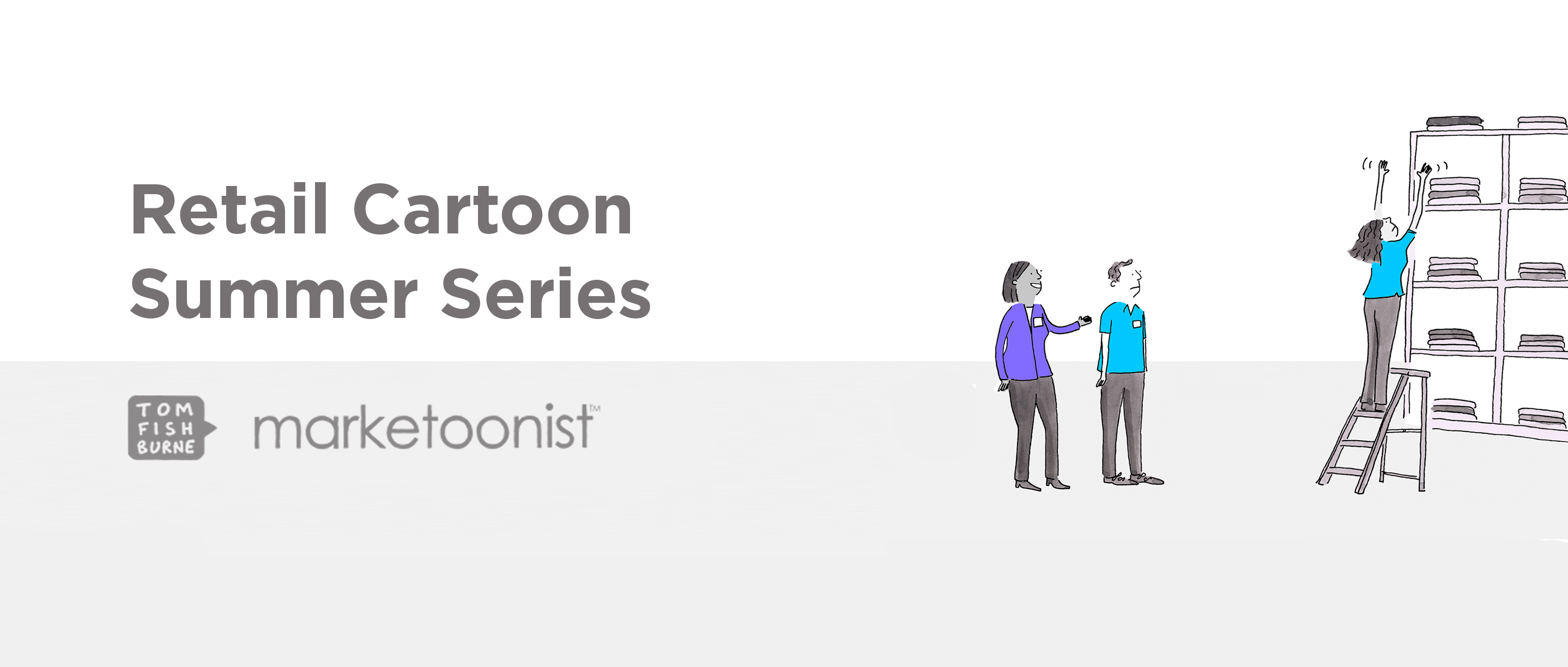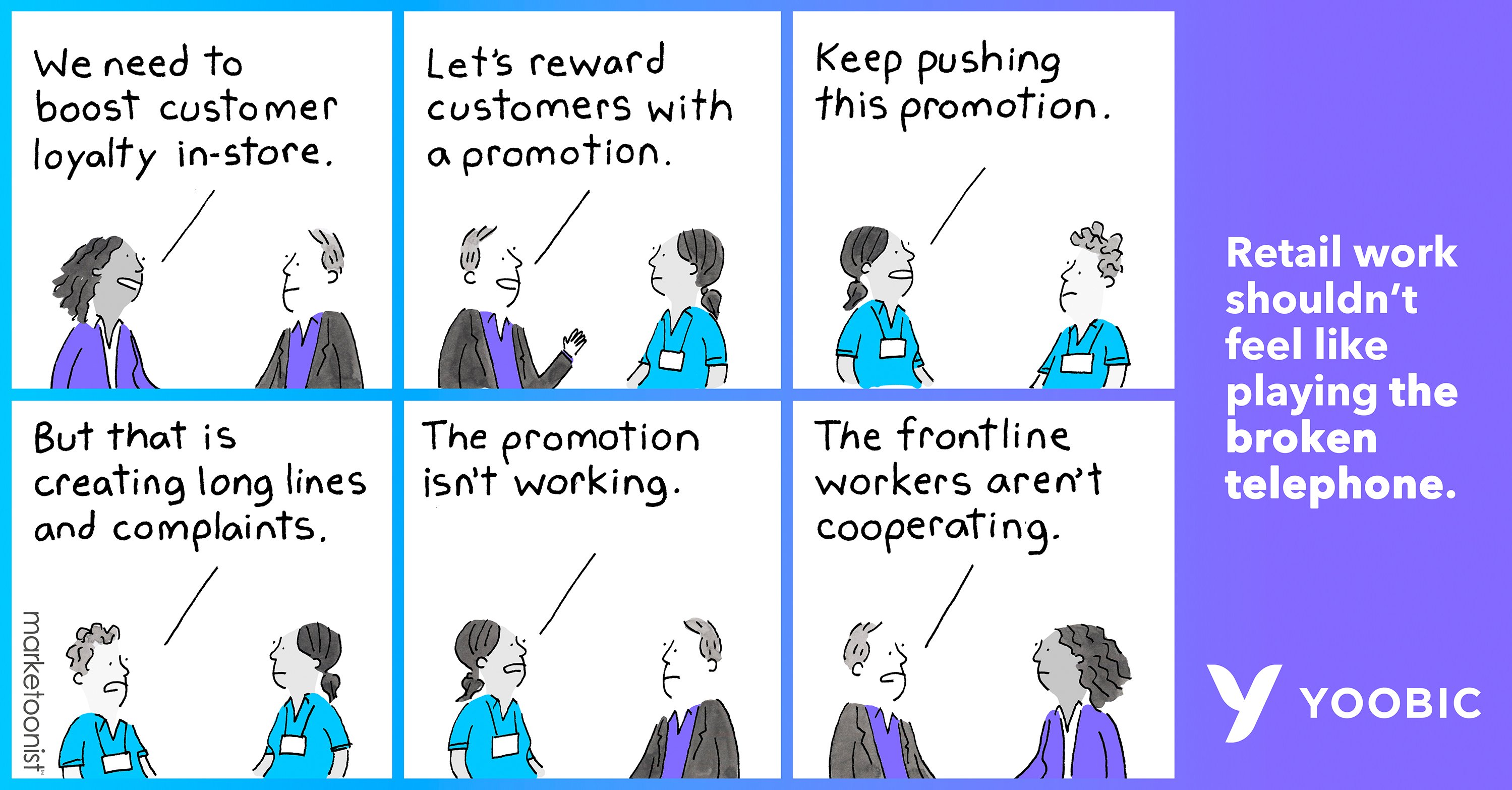Jul 21, 2022 9:44:04 AM
Retail | Communications | Marketoonist
Jul 21, 2022 9:44:04 AM
Retail | Communications | Marketoonist

This blog was guest written by Emmanuel Alavoine, an expert in retail consulting and brand building. Emmanuel has formerly held director positions in Finance and Supply Chain at L'Oréal, has been Managing Director for the Asia Pacific region at Bourjois (Chanel Group) and President of the Luxury Business Institute in Korea. For several years now, he has been supporting and advising brands to start, grow and scale their business in APAC, while activating their intangible assets with IP issues, ERP activation, collaboration processes, and teams training solutions.

Have you ever been met with situations where the chain of communication in a company leads to skeptical comments, narrow-minded judgements or bitter conclusions?
Such as:
"These promotions designed by our international HQ have always failed here because our country/market is different”
“These actions have already been tried before and failed”
“People at HQ do not know real life in our store!”
“Store teams are resistant to change and always complain!”
And have you ever noticed the ‘Face-Saving attitude’, where store managers start blaming others when poor results have to be reported to upper management to protect their own team, or save their job in front of the boss.
As GM, I had to deal with these situations.
For instance, in a well-known highly competitive retail market, at a time where Department Stores were almost the only big retail players to market high end beauty brands, the use of Gift With Purchase (GWP) was a recurrent and even an obsessive promotional tool. A hard selling trigger, for some brands...
We were aware of the prerequisite to become a big brand before "selling big" with GWPs. But in order to boost up the sales and ‘do as the competition does’, in line with the aspirations of the local store teams, we asked HQ to select, purchase and include high-end gift items as our GWPs.
Almost exclusively, HQ selected beauty product related items with visible perceived value. We managed a separate supply chain process, so we had to deal with expensive minimum order quantities to acquire these stocks and have them shipped over to the local stores.
Unfortunately, the results were... not very significant! No major uplift in sales was noticed. The “market had failed to respond” and everyone blamed someone else...
Store staff were blamed for excessively focusing on the gift and the gimmick instead of explaining the unique value of the products to customers. HQ marketing staff were blamed by local teams for having independently selected the GWP and creating, as a result, poorly attractive bundle offers. Local middle management were blamed for not having articulated the mechanics of the promotion with enough transparency to the store teams, missing targets from a marketing plan point of view.
Beyond the immediate reasons for these failures, such as promotions creating long queues in stores or GWPs being unable to drive sales up, there were communication issues which had not been properly dealt with beforehand.
So how can this be avoided?
Good retail communication is the foundation of good collaboration. It transforms a blame culture into one of transparency, trust, understanding and teamwork.
As Simon Sinek explains in his book: "Start with Why”, nurturing and driving a culture of positive critical thinking is also one of the best ROI management can get.
And it works both ways.
Encouraging store teams to suggest their ideas for how to approach processes opens the gate to easy and simple communication and innovation that’s actually beneficial.
When HQ shares the big picture and can collect feedback from middle management before cascading ideas to store teams, communication and reporting is streamlined and more valuable.
Before launching new processes, products or campaigns, communicating the company vision and best practices to store teams is essential. It is important to use different sales scenarios and explain expectations from all the parties involved. Doing this will increase employees’ self-confidence and emphasize how they are personally adding value to the business, increasing a sense of community and productivity.
Transparent, continuous retail communication, which keeps employees in the loop at all levels drives sales performance and creates an organization that is agile, innovative and adaptive.
Want to find out more about how to create a better employee experience for store teams? We surveyed 1,400 frontline employees to find out what they want most from their employers in 2022.
Search the blog

See why 350+ businesses are using YOOBIC
YOOBIC creates a better everyday working experience for frontline teams while helping businesses drive performance at scale.
PRODUCT
See why 350+ businesses are using YOOBIC
YOOBIC creates a better everyday working experience for frontline teams while helping businesses drive performance at scale.